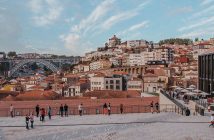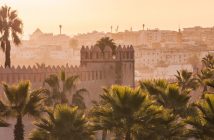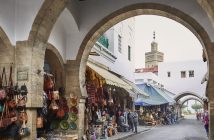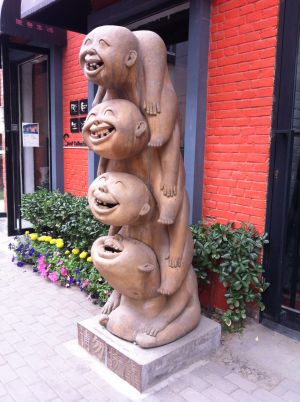 Perhaps the most unexpected, and certainly up there with my favourites, Beijing discovery, was the hip 798 art district. Over in the Dashanzi area, to the northeast of central Beijing, it reminds me of Toronto’s Whiskey Distillery. A one sq kilometre tree-lined maze of Bauhaus-style buildings housing galleries, cafes, shops, and streets dotted with buskers, hot food stalls, machinery, once used in the factories, and quirky art installations, from the fun to the controversial, such as a Sui Jianguo’s giant hollow bronze statue of a headless Chairman Mao. A former state-owned industrial factory district, producing electrical parts and armoury, it was considered the most important factory district in the 50s, with only the top engineers employed there. The factories were known only by their number, so as not to reveal what was being produced inside; 751 manufactured speaker parts, including the multitude in Tiananmen Square. It was decommissioned in the 80s. Around the same time, the art community moved in, transforming the vast abandoned spots into work, living and exhibition spaces. Popularity has grown gradually with locals and visitors alike, and, less than a decade after the first space was renovated – factory 798 in 2001 – over 75 million people have passed through, making it the third most visited place in Beijing. The best time to visit, I’m told by our local artist guide, is the afternoon as “artists get up late”. New galleries open every week, with many closing just as frequently, offering a constantly changing place to visit and revisit. It’s a brilliant representation of ‘new Beijing’, in contrast to over 5,000 years of history found in the likes of the Forbidden City, Great Wall and Hutong district.
Perhaps the most unexpected, and certainly up there with my favourites, Beijing discovery, was the hip 798 art district. Over in the Dashanzi area, to the northeast of central Beijing, it reminds me of Toronto’s Whiskey Distillery. A one sq kilometre tree-lined maze of Bauhaus-style buildings housing galleries, cafes, shops, and streets dotted with buskers, hot food stalls, machinery, once used in the factories, and quirky art installations, from the fun to the controversial, such as a Sui Jianguo’s giant hollow bronze statue of a headless Chairman Mao. A former state-owned industrial factory district, producing electrical parts and armoury, it was considered the most important factory district in the 50s, with only the top engineers employed there. The factories were known only by their number, so as not to reveal what was being produced inside; 751 manufactured speaker parts, including the multitude in Tiananmen Square. It was decommissioned in the 80s. Around the same time, the art community moved in, transforming the vast abandoned spots into work, living and exhibition spaces. Popularity has grown gradually with locals and visitors alike, and, less than a decade after the first space was renovated – factory 798 in 2001 – over 75 million people have passed through, making it the third most visited place in Beijing. The best time to visit, I’m told by our local artist guide, is the afternoon as “artists get up late”. New galleries open every week, with many closing just as frequently, offering a constantly changing place to visit and revisit. It’s a brilliant representation of ‘new Beijing’, in contrast to over 5,000 years of history found in the likes of the Forbidden City, Great Wall and Hutong district.
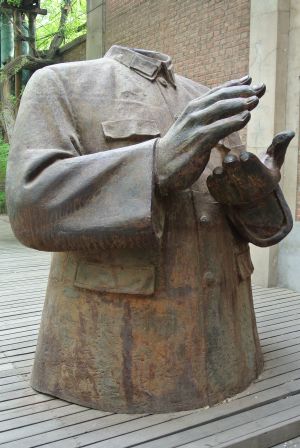 The pinch I discovered of Beijing’s iconic ancient sights was fascinating. It’s quite surreal to think that, say, the likes of the Forbidden City have stood since the 15th century and yet the beauty and detail that remains intact among its walls, looks much younger.
The pinch I discovered of Beijing’s iconic ancient sights was fascinating. It’s quite surreal to think that, say, the likes of the Forbidden City have stood since the 15th century and yet the beauty and detail that remains intact among its walls, looks much younger.
Known in popular culture as the setting for The Last Emperor, the only film to be shot here, the former imperial palace of the Ming and Qing Dynasty, was blanketed in a relentless, blistering heat on the day we explored; a sea of umbrellas from the largely Chinese tourists protecting themselves from the rays us ‘mad Englishmen’ were gleefully soaking up. The red and yellow buildings, each saturated with intricately carved detail, ensured even the most mundane parts of a building, the guttering and down pipes, were beautiful. Yellow, particularly in abundance, representing the colour of the earth; the centre connecting ying and yang, and the chosen royal colour all emperors dressed in. There are many gates to pass through before you reach the Forbidden City itself, grand doors studded with gold bolts, separating each area. Nine left to right, top to bottom, an imperial number which, when translated, sounds like ‘everlasting’. It’s no coincidence there are 9,999 rooms in the Forbidden City in total, that’s enough to allow you a different room to sleep in every night for 27 years. You have to pass through Tiananmen Square to get there, the third largest city square in the world, surrounded by government and cultural buildings, flourishing flower displays, tourist coaches and a two-hour queue to visit Chairman Mao’s crystal coffin, which we declined to join.
Over in the north, the Yonghe Temple, aka ‘Lama Temple’, built during the Qing Dynasty in 1694, is the largest temple in Beijing still open to the public, opulently carved and painted, and filled with the scent and smoke of burning incense. The majority of the 30,000-odd daily visitors carrying around bunches of them, in a bid to have their wishes granted by Buddha, for everything from success in business, the good health of an ill relative, or a ‘beautiful wife’ (the guide’s words). Three sticks, each decorated with Buddhist inscription, are meant to be burned and wafted in offering, yet the seemingly more needy carried around flaming bunches, threatening to catch alight something or someone in their vicinity.
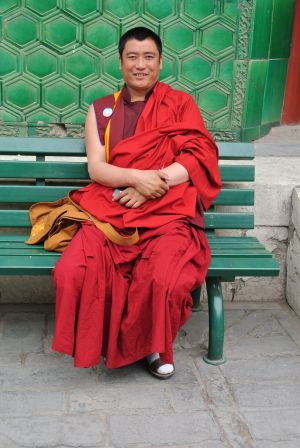 Residential monks, when not taking part in the daily services, sit around in rich red robes, looking serene and demonstrating they are very much in 2013 as they tap away on their mobile phones. The piece de resistance, out of the temples five halls, situated in the brilliantly named Pavilion of Ten Thousand Happinesses, is the 26 metre, 18th century Maitreya Buddah, carved out of a single trunk of white sandalwood; the largest wooden statue in the world.
Residential monks, when not taking part in the daily services, sit around in rich red robes, looking serene and demonstrating they are very much in 2013 as they tap away on their mobile phones. The piece de resistance, out of the temples five halls, situated in the brilliantly named Pavilion of Ten Thousand Happinesses, is the 26 metre, 18th century Maitreya Buddah, carved out of a single trunk of white sandalwood; the largest wooden statue in the world.
The native Gingle tree, recognisable by its fan-like leaves, line the pathways, along with the fanciest rubbish bins I’ve seen, trumped only by the gold versions over at the Temple of Heaven. Another notable sight, completed in 1420, with paint work inside the central Hall of Prayer for Good Harvests so beautiful, it’s borderline ridiculous, and an impressive tongue and groove structure built without a single nail. The former playground of Ming and Qing Dynasty emperors, leads off from the temples to the surrounding public Tiantan Park, lined with ancient trees made for hugging, and a heart-warming scene of elders playing Mahjong, interesting-looking instruments and bat & ball. Not a young person in sight as the older generations show how much fun can be had if you step away from a games console and out into the local park.
In between the iconic, history-steeped sights, vast construction sites are dotted around, contributing to modern Beijing. Among them lies part of the old city: the hutongs. There are 25 protected hutong areas, saved from the demolition others endured to make way for the 2008 Olympics and subsequent embracement of the 21st century. Taken from the Mongolian word for ‘water well’, as the residences, or siheyuens, were built around them, the hutongs are low level and a world away from the glossy high rises, with a charm that can only be obtained from being truly old. Simple and shack-like, with grand wooden entrances, opening out into a courtyard, around which three or four families, or generations of the same family, live around in mini communities. On the streets, residents huddle around tables playing cards; a wet market sells everything from freshly made potato noodles, mutant-sized vegetables, herbs and spices, to ammonia-scented 1,000-year eggs. Rickshaws are the best form of transport for exploring the area, with open houses available for the intrigued to visit, through one of the local tour guides (I recommend Frank from Bespoke Beijing, a lifelong hutong resident). Time your visit to take in one of the hourly percussion performances in the Drum Tower, where five drummers, powerfully pound in sync to create an almost hypnotic beat, exerting an enormous amount of effort in the process. This, the former centre of the Forbidden City, was some 300 years ago a way of telling the time, with 25 men striking the drums twice a day: the 5am morning rise and 7pm closure of the city gates.
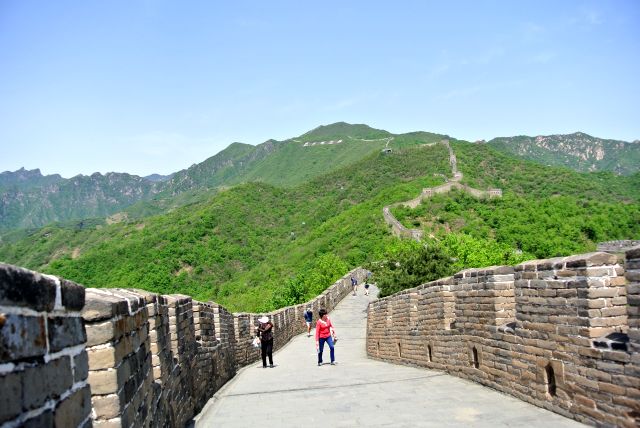
Outside the city, via an agricultural route with chestnut, walnut, persimmon, cherry, apples, pears and strawberries growing in abundance, and plenty of little roadside stalls to pull over and buy them from, lies the much younger Great Wall. 6,400 km from east to west, with the first part built over 2500 years ago, the mountain-top location was chosen to protect from enemies in Northern China. The work of mainly slaves and prisoners who, due to the back breaking work of carrying materials up the mountain, died and are buried in the wall. There are two spots near the city; we choose the furthest, the Mutianyu section 1.5 hours drive, where it is much less busy, and more beautiful, with lush green hills surrounding it, a great little market serving the majority of one’s souvenir needs, a chair lift that takes you right to the wall and a toboggan that brings you back down.
Four days later, with pretty much every notable sight seen, far more food than can be deemed ‘purely for research purposes’ consumed, and some obligatory ‘designer’ shopping at the Sanlitun Yaxiu market, it was time to leave this ancient hub of wonders behind, and hop on the fast train to Shanghai, to continue the journey…
A double room at China World Summit Wing starts from 2,530 RMB (approx £268) per room per night. Price includes tax and service. (B&B basis). A double room at Kerry Hotel, Beijing starts from 2,185 RMB (approx £231) per room per night. Price includes tax and service. (B&B basis).


